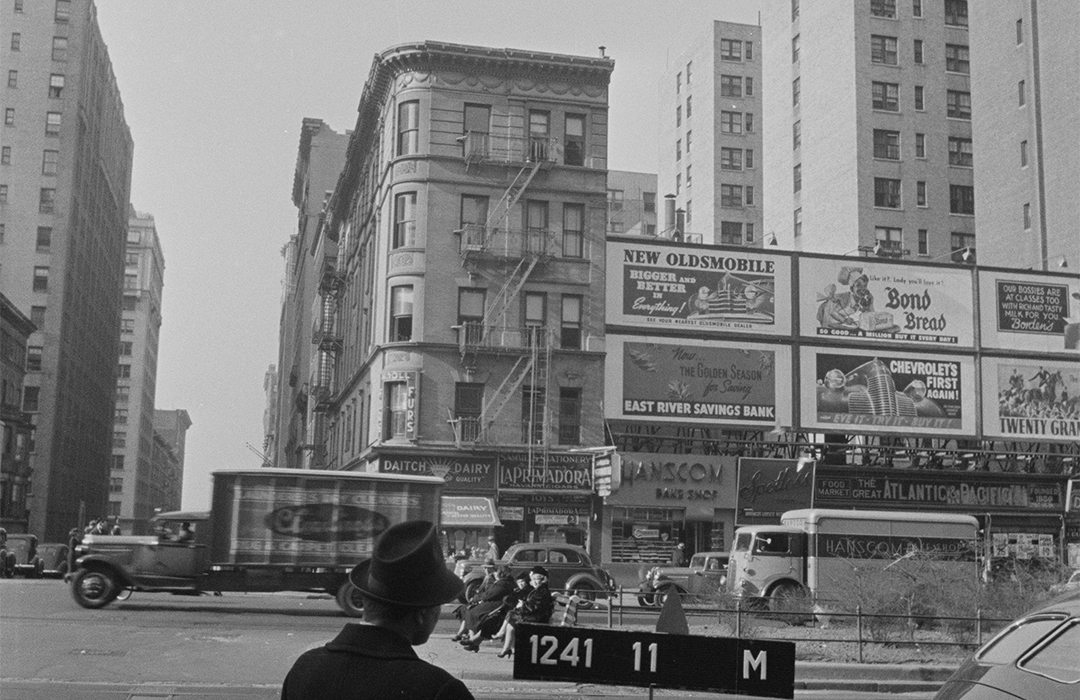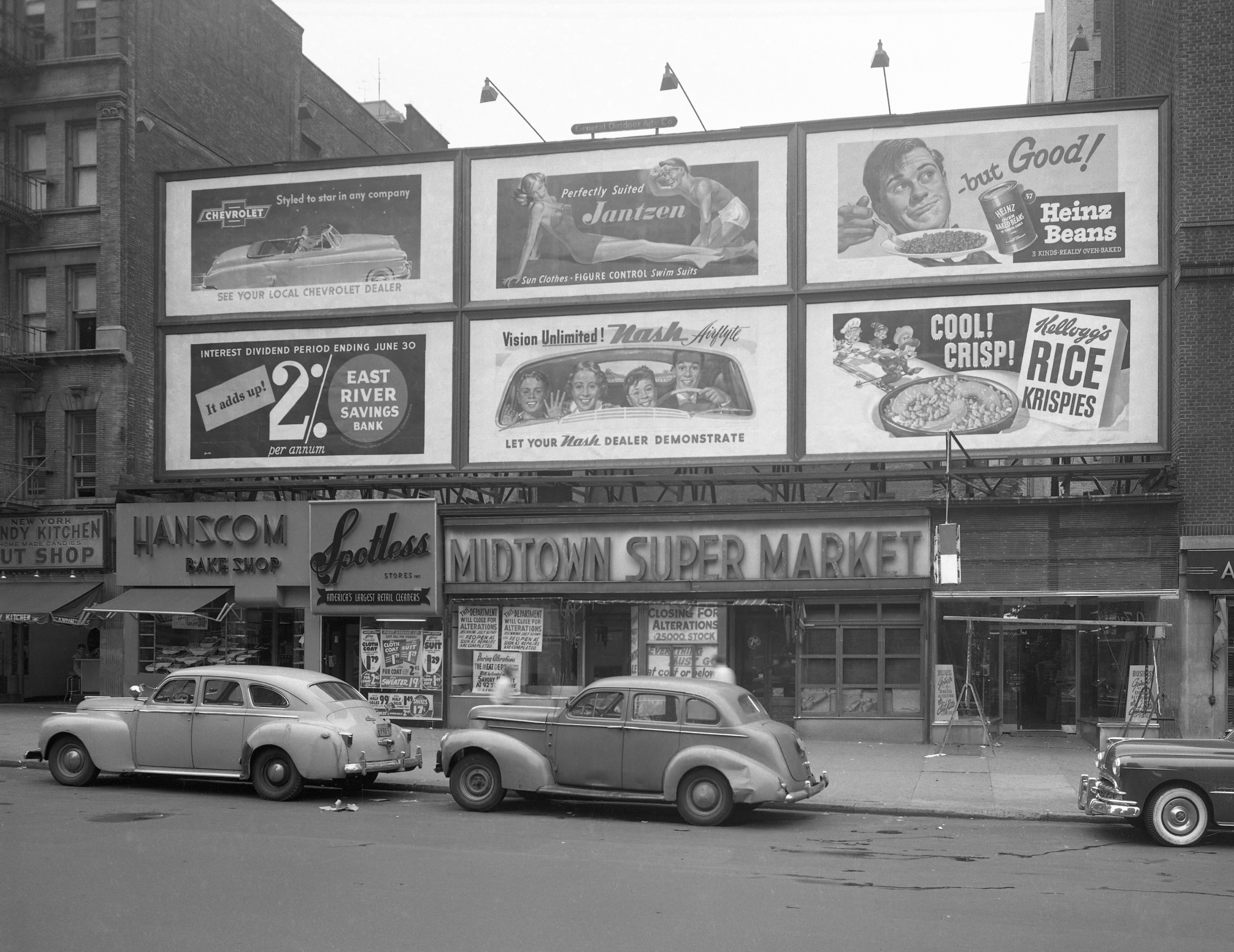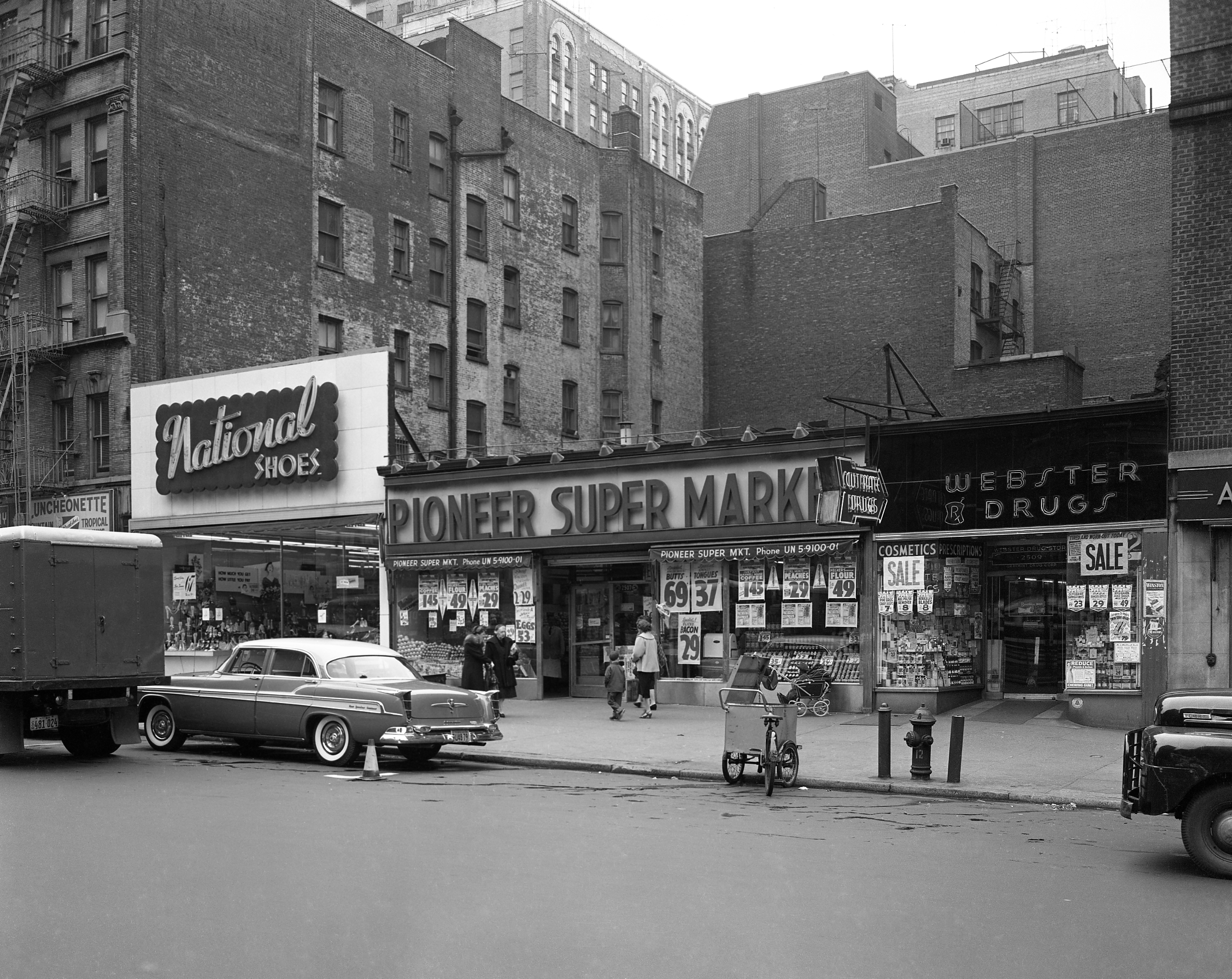
2503-2509 Broadway
by Tom Miller
As World War I came to an end, the headquarters of the American Meat and Supply Company was located at 2551 Broadway. In the spring of 1922, the firm commissioned architect Morgan O’Brien to design a “one-story brick market,” as described by the Real Estate Record & Guide on May 27. The rather nondescript structure would house a butcher shop for the American Meat and Supply Company at 2505-2507 Broadway, flanked by income-producing stores.
Construction was completed within four months of breaking ground. On September 6, 1922, The Butchers’ Advocate announced, “The new market of the American Meat and Supply Company, opened last week by Hugo Heyman, is one of the finest equipped markets in New York City.” The article noted that because of the nature of the business, “every possible attention [was] paid to sanitation and practicability.” The primary construction materials were concrete and metal “to insure [sic] perfect sanitation, and in addition to which, cleanliness is assured by it being possible to wash every part of the establishment with a hose.”
The salesmen at the counter communicated with the back area “by means of a callophone system, which is an innovation.”
Behind the customer area was a hub of activity. “Beef is ridden in on a trolly over a track scale to the cooler,” said the article. “There is a storage room with concrete vats for meat and fish, and the cooler is equipped with every modern convenience, in which orders are executed for meat as received.” The salesmen at the counter communicated with the back area “by means of a callophone system, which is an innovation.”
In addition to the butcher section, the store had a delicatessen and bakery, supported by an in-house kitchen. A refrigerating plant in the basement forced cold air into the meat and fish cases, the dairy case (which was built into the wall), the window displays, and into the coolers and freezers. The Butchers’ Advocate noted, “there are also facilities for ice-making, which the owners consider will develop considerable savings.” The building also included a wrapping department, a “re-check weighing system” to prevent over- or under-selling, executive offices, and a locker room for the employees.
One of the coolers played a key part in an attempted burglary on January 25, 1926. The night watchman, Thomas Ford, opened the door and was forced back by five armed men. He was tied up, gagged, and forced into a chest-style cooler partially filled with chickens. The New York Sun reported, “After Ford had been trussed up and forced into the meat box, the lid was closed down and one of the bandits sat on top of it to make sure the night watchman did not get out.” In the meantime, his cohorts managed to pry the door off the safe but were unable to break into the inner door. Eventually they gave up and fled.
After having been held captive in the cooler with frozen chickens for two hours, Ford forced open the lid and escaped. The newspaper wrote, “although shivering from the extreme cold and bound and gagged, he made his way to the front door, where he finally attracted the attention of a passerby, who notified police.”
American Meat and Supply Company left in 1933, replaced by an A & P grocery store. The store, which opened on September 16, 1933, was flanked by two cleaners—the Spotless Cleaners in 2503 and Empire Valets, Inc. in 2509. On September 20, just four days after the A & P opened, an 18-year-old employee of Empire Valets, Inc. discovered a fire in 2509 Broadway. In attempting to put it out, he was burned on the left arm and face. Unfortunately, his attempts cost valuable time, and the shop was engulfed when firefighters arrived. One of them, 34-year-old Arthur Flaherty, fell from a ladder and broke his leg and possibly fractured his skull. The New York Sun reported that his leg “may have to be amputated.” Several other firefighters were overcome by what the article described as “acrid black smoke.”
On September 20, just four days after the A & P opened, an 18-year-old employee of Empire Valets, Inc. discovered a fire in 2509 Broadway.
When the fire was finally extinguished, 2509 Broadway was “wrecked,” according to The New York Sun. The smoke had filled the A & P Store tainting stock. A representative stated that $20,000 worth of food had been damaged. “The Health Department will be asked to inspect it, he said, and if it is found fit for human consumption it will be given to charity.”
In 1951 a Pioneer Food Store moved into 2507-2509 Broadway and would remain for more than a decade. By 1962 the Graymint Drug store occupied 2509 Broadway, and in the mid-1970s, the middle store was occupied by Dalco United, a clothing shop.
The 1922 row was demolished in 2018 to make way for 2505 Broadway, a 19-story residential building designed by Eran Chen, principal in ODA architects.
Tom Miller is a social historian and blogger at daytoninmanhattan.blogspot.com




